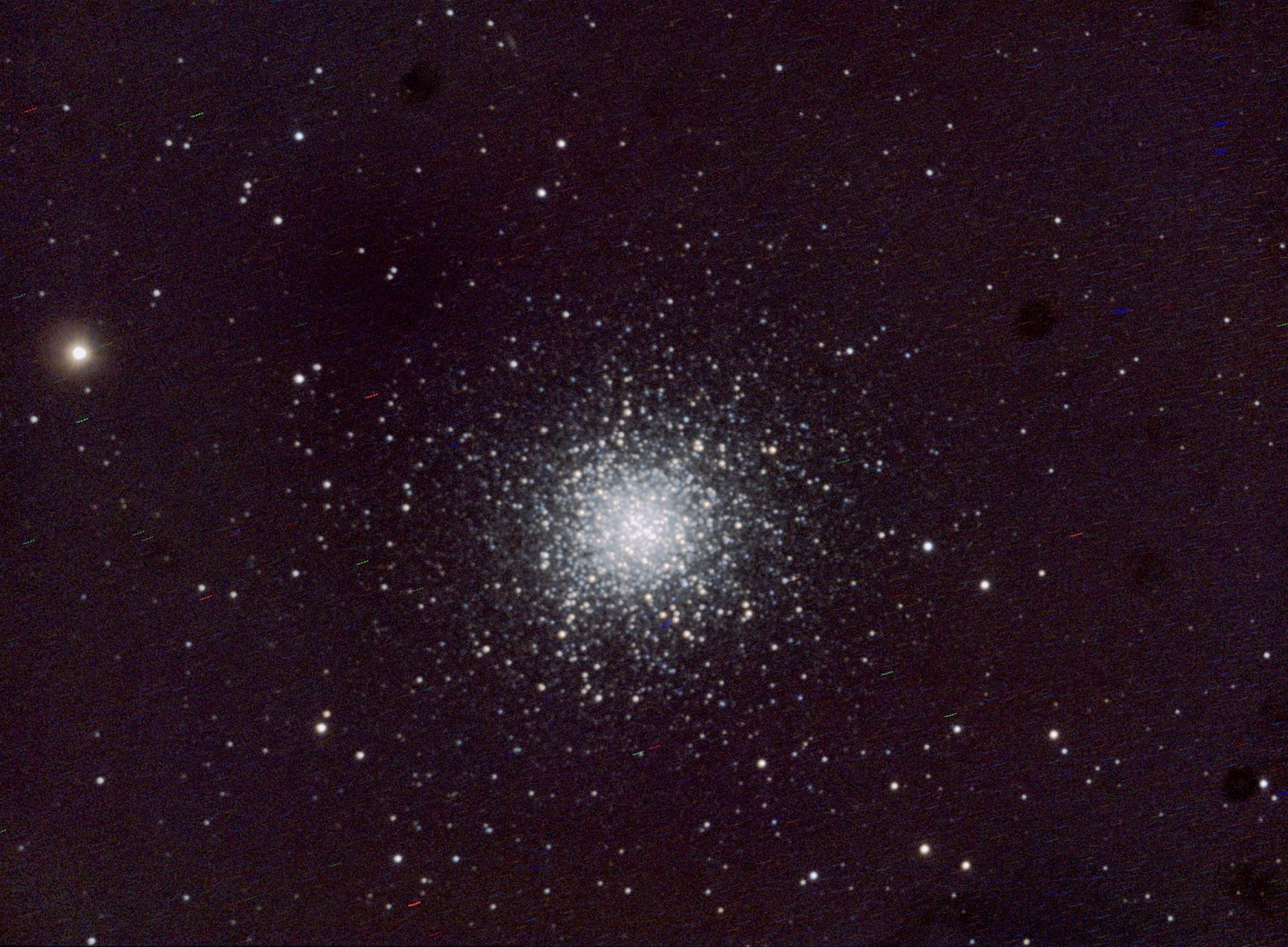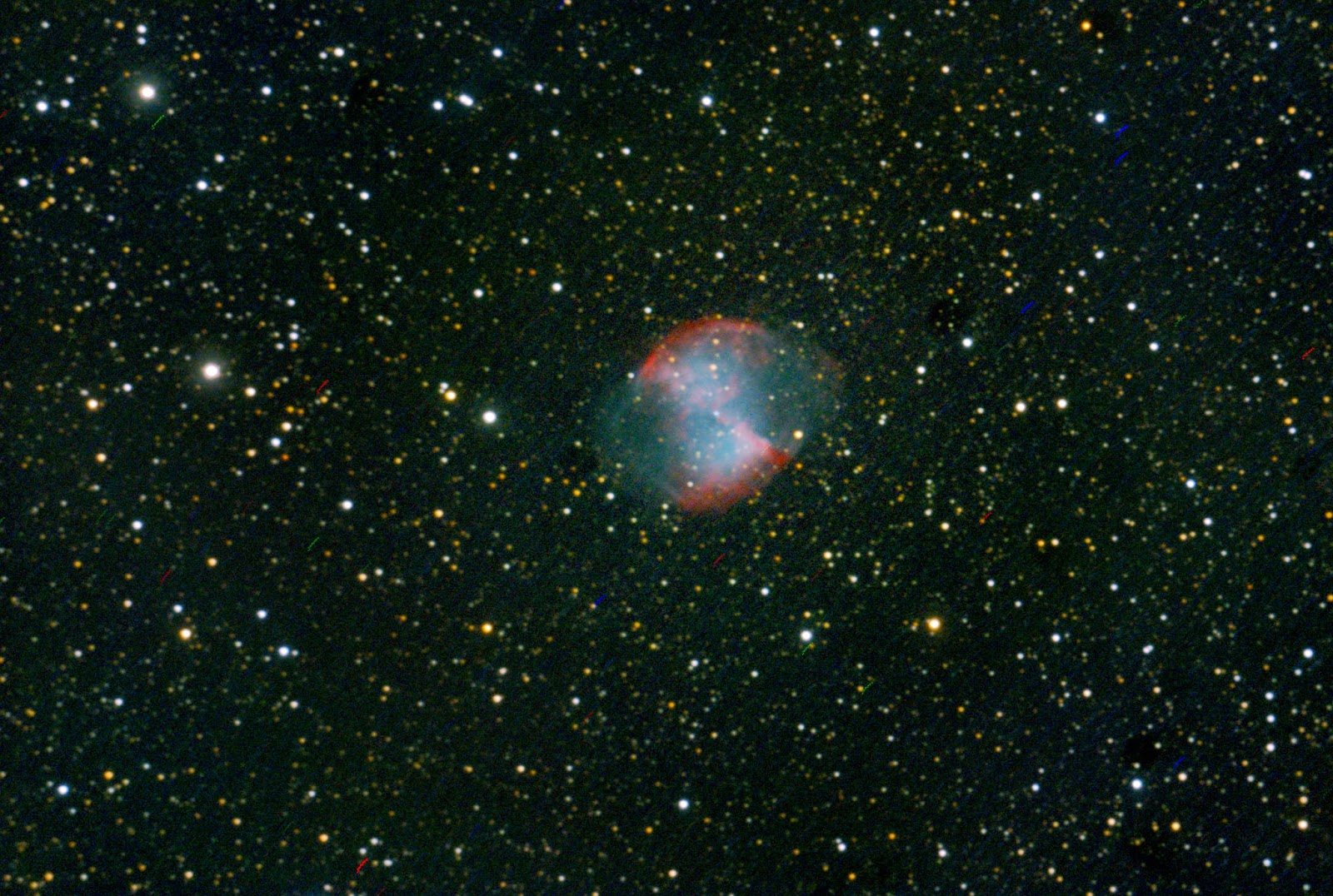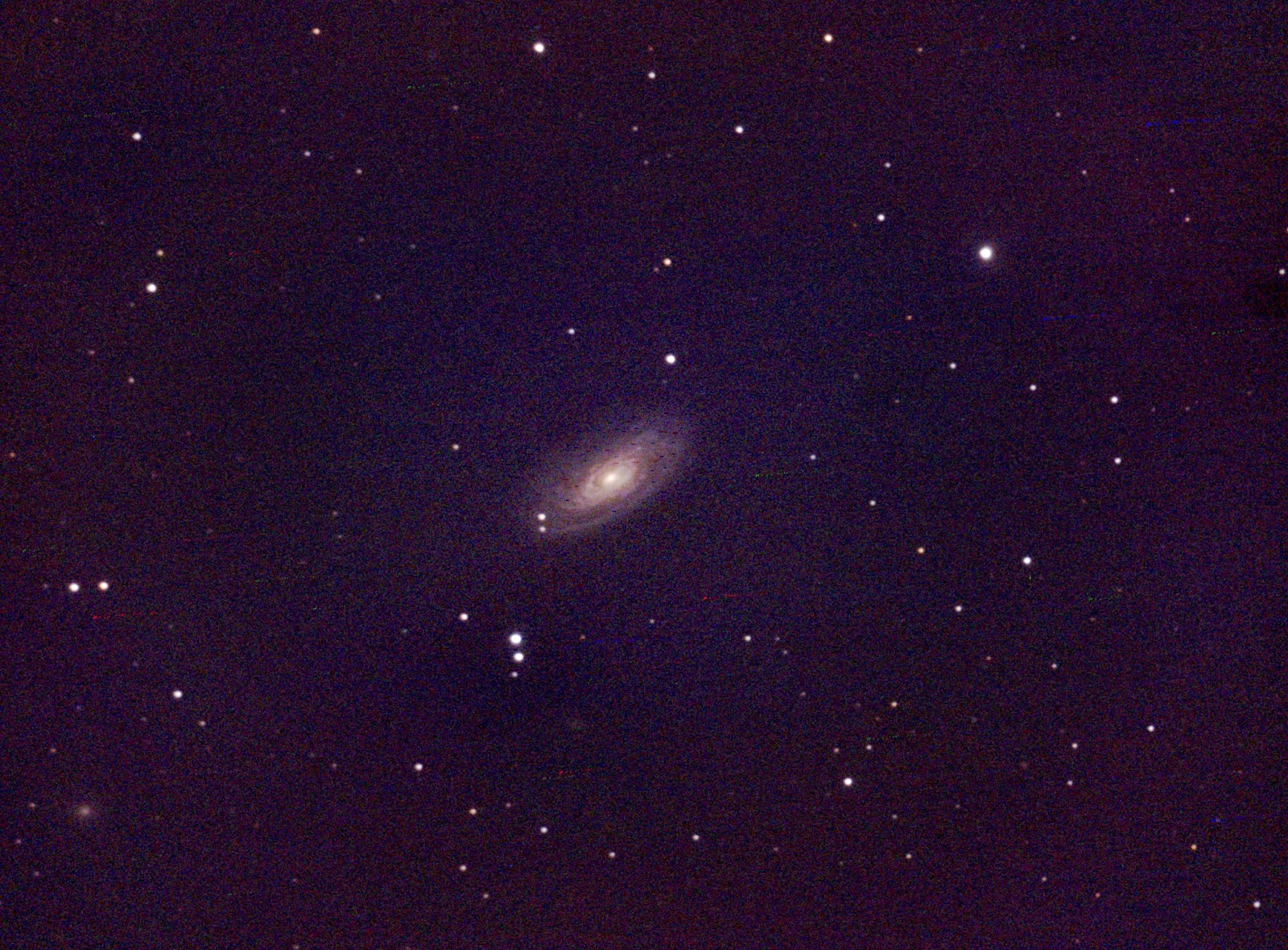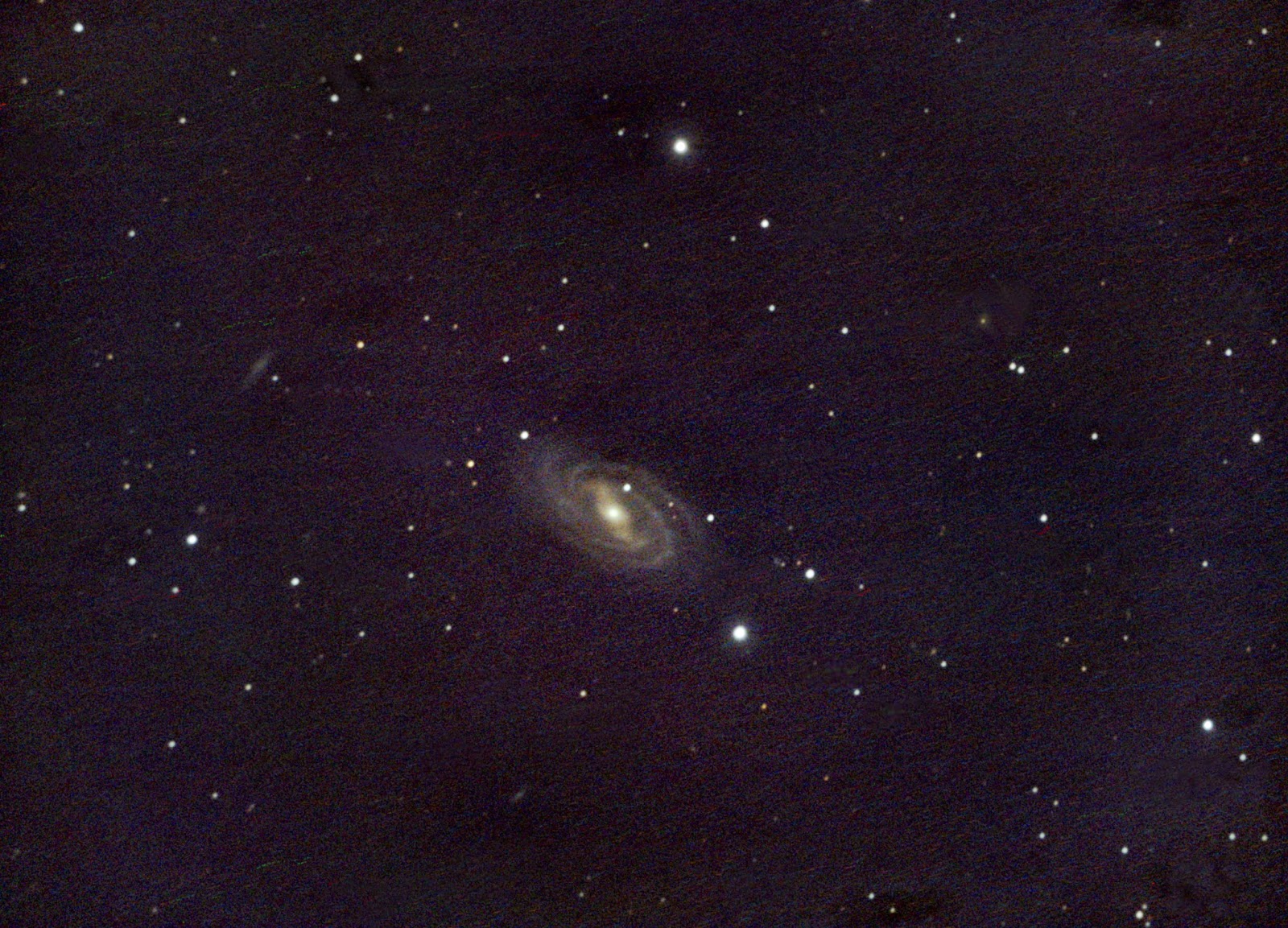M13
Actually, we'll start with something much closer to home. The famed Hercules Globular Cluster, a great ball composed of several hundred thousand stars packed close together. Located about 22,000 light years away, M13 is part of the Milky Way and is easily visible through binoculars or small telescopes. The cluster can sometimes be detected as a fuzzy patch with the naked eye -- about a third of the way between the stars Eta and Zeta Herculis, if viewed from a very dark location away from city lights.
The English polymath Edmond Halley first noted the cluster in 1714; French comet-hunter Charles Messier added it to his famous list of fuzzy objects in 1764.
This image was composed with 15, 120-second sub-exposures for a total exposure time of 30 minutes. It was taken through the 8" Schmidt-Cassegrain at f/10. All images in this post were captured with the Starshoot Pro camera.
M27 -- The Dumbbell Nebula
One more local attraction before we leave the Milky Way. Though this nebula is definitely a resident of the summer sky -- appearing in the constellation Vulpecula -- it had risen high enough at the end of my last imaging session to get a preview.
Born when an aging star blew off its outer layers, M27 is a planetary nebula. The star that gave it birth survives as a much-shrunken white dwarf at its center. The nebula is thought to be less than 15,000 years old and is located more than 1,300 light years away. It is easily visible in binoculars or a small telescopes as a faint greenish-white cloud having the apparent shape of a dumbbell or hourglass -- hence it's common name.
This image was taken through the 8" Schmidt-Cassegrain at f/10 and comprised of 24, 120-second subs, for a total exposure time of 48 minutes.
M88
And now we move outside of the Milky Way ... indeed, a very long way outside it. M88 is a spiral galaxy that appears in the constellation Coma Berenices. Part of the Virgo Cluster of galaxies, it is estimated to be about 55 million light years distant. The galaxy is seen at about a 64-degree angle.
I didn't get as many subs as I wanted for this image, so I will have to return to M88 again before summer arrives. 23, 120-second subs taken through the 8" Schmidt-Cassegrain at f/10 were combined to create this 46-minute exposure.
M101
This is a large spiral galaxy, seen face-on, that appears in the constellation Ursa Major. With a disk roughly 170,000 light years in diameter, M101 is home to more than 100 billion stars. It is located around 20 million light years away and is sometimes called the Pinwheel Galaxy. It is faintly visible in small and medium-sized telescopes under dark skies.
This image is composed from 55, 120-second subs taken through the 8" Schmidt-Cassegrain at f/10 over two nights earlier this month. Total exposure time on this image is just under 2 hours, but at least another hour will be needed to draw out detail in the spiral arms.
M109
Also appearing in Ursa Major, M109 is a barred-spiral galaxy. The galaxy is estimated to be between 60 and 84 million light years away and is part of a group of about 50 galaxies.
40, 120-second subs taken through the 8" Schmidt-Cassegrain at f/10 were combined to create this 80-minute exposure.




